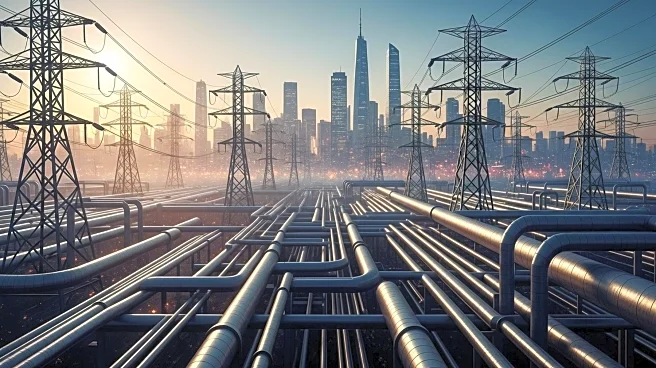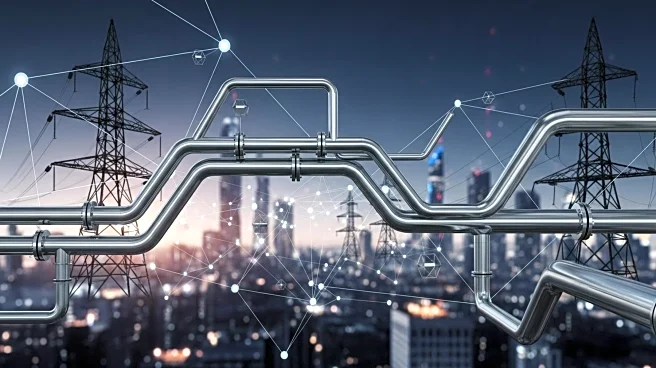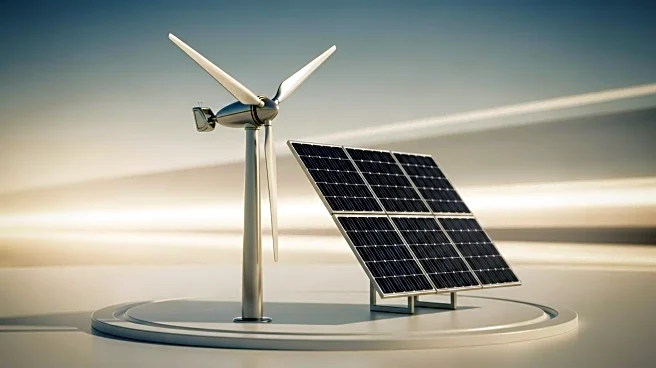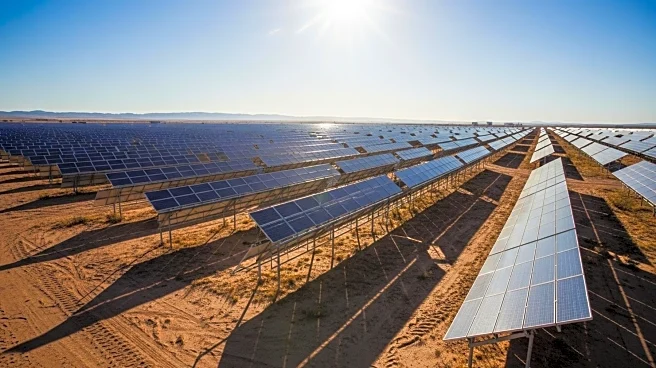What is the story about?
What's Happening?
The U.S. energy system is currently facing significant challenges due to a combination of increasing electricity demand, outdated infrastructure, and policy uncertainty. A major concern is the erosion of energy data infrastructure, which poses a systemic threat to the financial viability of renewable energy projects and the broader energy transition. Electricity demand is projected to grow by 25% between 2023 and 2030, with data centers accounting for nearly half of this increase. This surge in demand is outpacing the grid's ability to adapt, exacerbated by the retirement of coal-fired plants and slow deployment of renewable and storage capacity. The interconnection process for new projects averages 35 months, leading to a mismatch between supply and demand, increasing the risk of rolling blackouts and price volatility.
Why It's Important?
The challenges facing the U.S. energy infrastructure have significant implications for market stability and renewable energy investments. The American Society of Civil Engineers has rated the U.S. energy sector poorly, highlighting insufficient transmission capacity and aging distribution transformers as critical vulnerabilities. These issues are causing financial losses, with many renewable projects facing delays or cancellations. Investor confidence is further shaken by policy shifts, such as the One Big Beautiful Bill Act, which introduces regulatory uncertainty and impacts renewable investment. Geopolitical and supply chain risks, including rising tariffs and reliance on foreign-controlled supply chains, are also disrupting project timelines and increasing costs. Without urgent reforms, the grid may be unable to support future demand, leading to a collapse in investor confidence and derailing the energy transition.
What's Next?
Addressing these challenges requires modernizing grid data infrastructure through real-time monitoring and predictive analytics, streamlining the National Environmental Policy Act review process, and expediting permitting for transmission lines. Policy stability is essential to provide investors with clear, long-term signals to justify the upfront costs of renewable projects. The U.S. must act urgently to prevent a grid unable to meet future demand and restore investor confidence to ensure the success of the energy transition.
Beyond the Headlines
The erosion of energy data infrastructure highlights deeper systemic issues within the U.S. energy sector. The reliance on outdated systems and the slow pace of regulatory reform underscore the need for a comprehensive approach to modernize the grid. The challenges also reflect broader geopolitical dynamics, as the U.S. competes with other regions for renewable energy investments. The situation calls for collaboration between government, industry, and civil society to address these vulnerabilities and secure a sustainable energy future.
AI Generated Content
Do you find this article useful?














